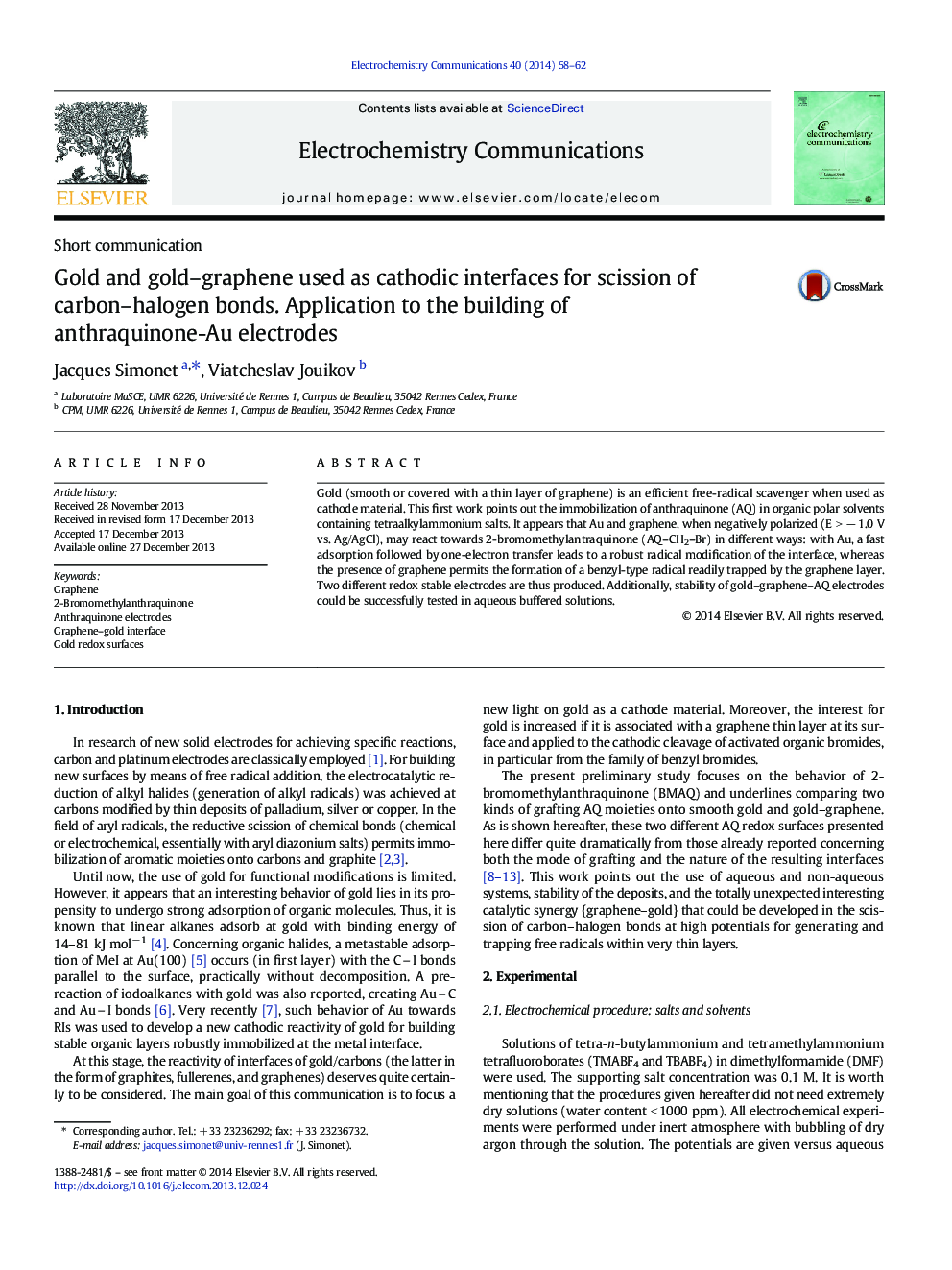| کد مقاله | کد نشریه | سال انتشار | مقاله انگلیسی | نسخه تمام متن |
|---|---|---|---|---|
| 179062 | 459334 | 2014 | 5 صفحه PDF | دانلود رایگان |

• Mono-layer attachment of anthraquinone onto gold
• Concept of gold–graphene interfaces for generating and trapping free radicals
• Building of robust anthraquinone electrodes usable in non-aqueous media and buffered aqueous media
• New concept for 3D redox electrodes
• Chemical modification of graphene due to radical addition
Gold (smooth or covered with a thin layer of graphene) is an efficient free-radical scavenger when used as cathode material. This first work points out the immobilization of anthraquinone (AQ) in organic polar solvents containing tetraalkylammonium salts. It appears that Au and graphene, when negatively polarized (E > − 1.0 V vs. Ag/AgCl), may react towards 2-bromomethylantraquinone (AQ–CH2–Br) in different ways: with Au, a fast adsorption followed by one-electron transfer leads to a robust radical modification of the interface, whereas the presence of graphene permits the formation of a benzyl-type radical readily trapped by the graphene layer. Two different redox stable electrodes are thus produced. Additionally, stability of gold–graphene–AQ electrodes could be successfully tested in aqueous buffered solutions.
Figure optionsDownload as PowerPoint slide
Journal: Electrochemistry Communications - Volume 40, March 2014, Pages 58–62